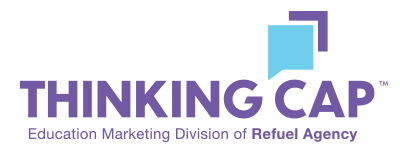In the right hands, a CRM for higher education is a tool with immense value that can be used to streamline your marketing efforts and produce data-driven results. For those who may be new to implementing this kind of system for higher education marketing, though, it may not be all that obvious how to harness the power and get started.

What is a CRM for higher education?
Customer relationship management (CRM) is a kind of software that acts as a communication tool for teams and individuals. In today’s enrollment marketing world, a good CRM tool is the backbone to student recruitment efforts. A CRM tool allows enrollment marketers to learn about their prospective students and keep track of their journey through the enrollment funnel, allowing marketers to nurture relationships with prospects, produce data-driven results, and streamline their efforts to benefit teamwork and save time and effort.
What can a higher education CRM do?
Even if you’re familiar with the concept of CRM, fully understanding exactly what this tool can do to help your enrollment marketing efforts can take some thorough research. CRMs help universities manage communications with students before they enroll, during their tenure, and after they graduate — helping your institution to meet the high expectations of prospective students. Here are a few common functions that most CRMs will include:
- Team management: Tools of team collaboration, task scheduling, lead pipeline tracking, and workload planning
- Contact management: The ability to store individual contact profiles, segment them, and track your interactions with each profile
- Communication tools: The ability to detail and even integrate communications with contacts via phone, email, instant messaging, SMS, and social media
- Marketing automation: Enables your team to automate certain processes across digital channels
- Reporting: The facility to synthesize all the valuable, granular information into reports to use to improve your efforts
Read next: The Anatomy of a Great Higher Education Landing Page
Build relationships with prospects using CRM for schools
Building relationships with students can feel like an intangible and untrackable goal. But with the right CRM for university admissions, you can turn the seemingly impossible into a science and make the process work in your favor.
Think about the student enrollment journey–an ideal series of interactions with a prospective student. You would want to reach out to the student as soon as they express interest and influence the decision-making process through strategic messaging. This also can help students through any roadblocks they may encounter. Achieving these types of prompt, thorough interactions with students manually would require constant monitoring and an enormous effort from your recruitment team.
With a CRM, however, this labor-intensive process can be automated and converted into a true science that effectively nurtures your student leads and takes the workload off your team. You can build lists of new prospects and segment them by location, course, or any other parameter you choose. As your leads progress through the enrollment journey, your team can track your follow-up activities in order to know what step comes next and how to best serve the needs of each lead.
Read next: 5 SEO for Higher Education Tips to Boost Your Traffic
A CRM success story: The Saïd Foundation
A perfect example of what CRM can do for your admissions process and student retention is The Saïd Foundation. The foundation provides postgraduate scholarship awards and supports students with disabilities, and provides students with disadvantaged backgrounds with access to high-quality education.
Before converting their application process to a digital process via a CRM, applicants to the school had to download and print a PDF form. Then, they had to submit this form with supporting documents to a local representative. This process was time consuming for everyone involved.
But since implementing a CRM to streamline this process for them, applications to the institution increased dramatically by 62% and processing time was cut by 20%.
Use CRM workflows to manage leads through the enrollment journey
One of the most useful features of a higher education CRM is the ability to create workflows for your team (also called campaigns in some systems). Workflows help you plan your management and nurturing of specific segments of your audience.
These workflows could be relatively simple, like a workflow that assigns leads to specific owners. But depending on your needs, you could also create a more detailed workflow, in which events occur at certain intervals, or certain actions trigger different activities from your staff. This functionality allows you to plan your recruitment efforts as meticulously as you need to.
Read next: 5 Things Your Prospective Students Won’t Tell You
Measure your school’s progress with CRM reporting and analytics
A CRM is such a powerful tool because it’s able to collect and organize large quantities of useful data in a way that’s accessible to members of your team. Thus, the reports that you can generate will make a valuable addition to your school’s recruitment efforts, and will be able to aid you as you seek to improve them.
Most CRM’s will also give you access to dashboards, which are highly visual representations of your data. Having your information available at a glance can make it much easier for your team to track your progress over time.
CRM for Marketing ROI: Setting Up Proper Source Attribution
Something you need to keep in mind with the amount of data your CRM collects is how important it is to ensure your data is being tracked correctly. This is arguably one of the most challenging aspects of managing a CRM for your higher education enrollment marketing. You need to properly attribute your prospects’ activity as they move through your recruitment funnel. Without correct attribution, the data you collect will not be an accurate representation of your recruitment efforts and thus won’t be valuable to you.
For example, if you have no source attributed to your leads, it becomes difficult or impossible to know which source is performing better. And without this data, it’s hard for your team to determine which channels they should prioritize, or how to identify new initiatives.
Once you have correct tracking in place, you can feel confidence that the insights you’re gaining from your CRM are genuine indicators of your performance and what your next steps should be.
How to Choose the Best Higher Education CRM
There are many options out there when you’re choosing your CRM, each with their own pros and cons. The first thing you need to decide is whether you want a general-purpose CRM or a CRM that has been specifically designed for student recruitment.
Think most of all about how your university plans on using your CRM. Are you focused on automating marketing campaigns to attract more prospective students, tracking the individual throughout their student lifecycle, pulling reports and analytics, or all three? Think about what works well for you already, where your current gaps are, and what your institution’s long-term plans are.
You’ll also need to choose between a “unified & integrated” CRM, or a “converged CRM”. A unified and integrated CRM has different elements that have been packaged together, which results in a potentially more tailored experience but also a lack of consistency. A converged CRM, on the other hand, offers an all-in-one solution, with student recruitment, admissions, and marketing systems integrated into a single streamlined program. A converged CRM is often easier to implement and operate.
QUAD: Full University CRM Integration
We know how important your higher education CRM is to your overall marketing strategy, and the true breadth of data you track. That’s why at Thinking Cap, we offer full CRM integration with our QUAD reporting model — so you can track your campaign results in real-time.
Ready to boost your enrollment numbers with a data-driven media plan, custom-tailored to your school’s goals? Contact us today to get started.




